Turn on Tls 1 0 Tls 1 1 and Tls 1 2 in Advanced Settings and Try Connecting to Again
This article will show y'all how to disable SSL 3.0 and TLS i.0 in your browser.
Introduction
After the recent POODLE unpleasantness, both Google and Chrome secured their latest browser versions (Firefox 35, Chrome twoscore) by disallowment the use of the SSL 3.0 encryption protocol entirely, since POODLE utilizes this protocol as an attack vector. (Microsoft has released various patches and quick-fixes for Internet Explorer 11 and states they'll completely disable SSL iii.0 in April 2015.)
Disabling SSL 3.0 is definitely a Proficient Thing. However, the subsequent revelation that TLS 1.0 is too vulnerable seems to have caught them on the off foot – TLS 1.0 is still enabled by default in all three major browsers every bit of this writing. In this article, we volition bear witness yous how to protect yourself by forcing your browser to apply simply the safer TLS one.i and TLS 1.2 protocols.
NOTE: POODLE and similar exploits work when both the server and browser ends of a supposedly safe connection can be tricked into using an obsolete protocol. If yous have secured your browser to just apply TLS 1.1/1.2 just the website's server still relies on older, insecure protocols, be aware that you may have problems connecting to that site.

Compare UCC and SAN certificates, starting at $141.60 per year.
COMPARE
Internet Explorer
- Left-click the gear icon:

- Select "Internet options" from the dropdown carte du jour:
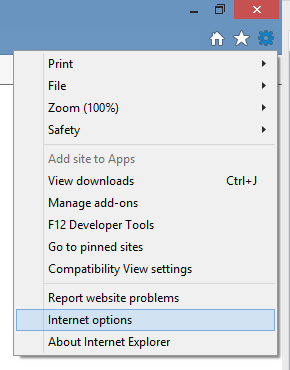
- Click the "Advanced" tab, scroll down and deselect "SSL 3.0" and "TLS ane.0".

- Click "OK" to take your changes, which should take effect immediately. (You may need to refresh your browser.)
Firefox
- In the address bar, type "almost:config" and hit enter.

- In the "Search" field, enter "tls". Find and double-click the entry for "security.tls.version.min".

- Set the integer value to "two" to force a minimum protocol of TLS 1.1 (entering "3" would force TLS 1.2).
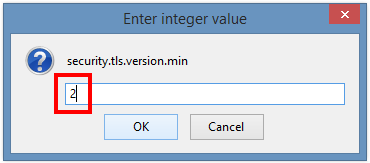
- This configuration volition at present show the new value and will have effect immediately (don't forget to clear your enshroud).

Chrome
Science marches on! A massive tip of the hat (or tip of the massive chapeau) to commentator John Giles for pointing out that using chrome://flags/ is the latest and easiest mode to set the minimum protocol version in Chrome. We must note that Google hangs a red warning over using flags – however, our testing has yielded positive results.John says:
For Chrome, how about this?:
chrome://flags
Under "Minimum SSL/TLS version supported.", modify from "Default" to "TLS 1.1?.
Then press the "Relaunch Now" button at the lesser of the page.
Cheers again, John!
Unlike IE and Firefox, Chrome can only be made to employ TLS i.1/1.ii past a command-line switch – an statement added to the cord that fires up the browser. This tin exist implemented past setting up a shortcut as we will bear witness yous below, but note that ONLY starting Chrome from this shortcut will forbid use of insecure protocols.
To create a secure shortcut:
- Right-click on your desktop and select "New", then "Shortcut".

- In the "Create Shortcut" panel, scan to the location of your Chrome installation and select the Chrome icon – the default location is:
C:Program Files (x86)GoogleChromeApplicationchrome.exe

- Add the following command line switch
--ssl-version-min=tls1.1subsequently the item location (i.e., afterwards the catastrophe quote) to appear thus:"C:Program Files (x86)GoogleChromeApplicationchrome.exe" --ssl-version-min=tls1.1
Make sure and divide the switch from the location with a space.
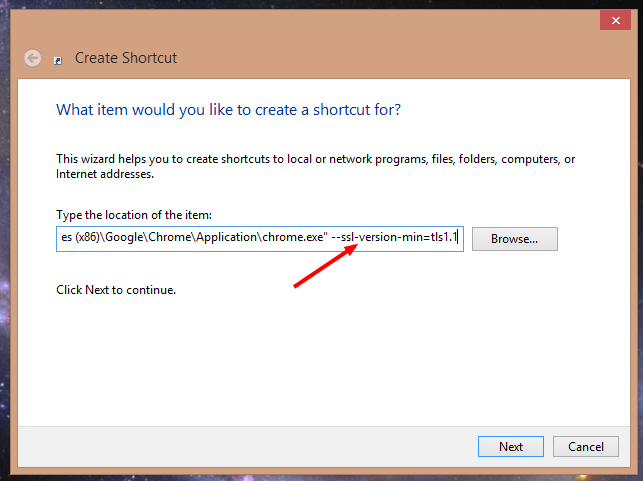
- Name the shortcut (SSL.com suggests giving it a unique name which will remind yous that this shortcut is secure) and click "Terminate."
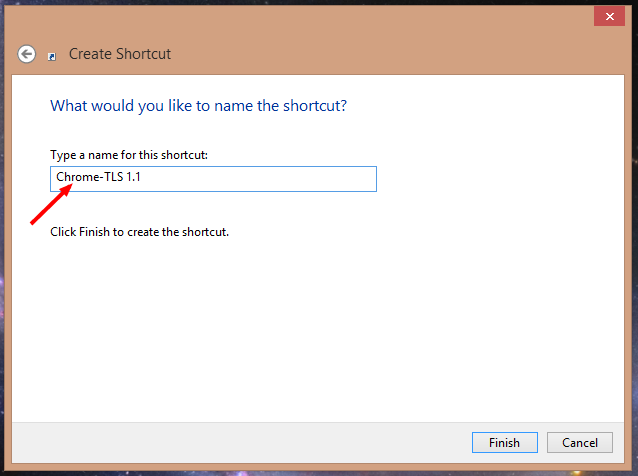
- Again, the only style to be certain that your Chrome session is secure will be using your new shortcut.
Thank you for choosing SSL.com! If you accept whatsoever questions, please contact us by email at Back up@SSL.com, call ane-877-SSL-SECURE, or just click the chat link at the bottom right of this page. Yous tin can also find answers to many mutual support questions in our knowledgebase.
Source: https://www.ssl.com/how-to/turn-off-ssl-3-0-and-tls-1-0-in-your-browser/
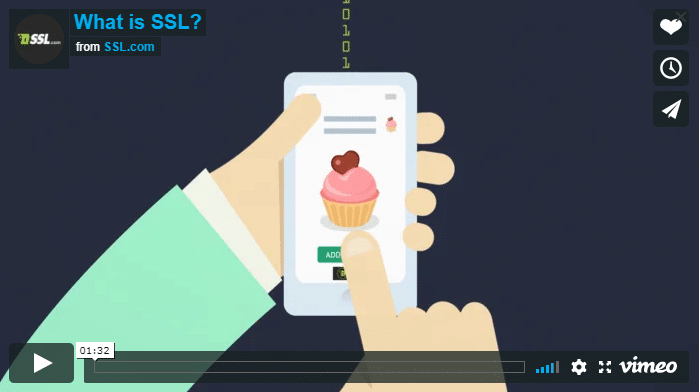
0 Response to "Turn on Tls 1 0 Tls 1 1 and Tls 1 2 in Advanced Settings and Try Connecting to Again"
Post a Comment